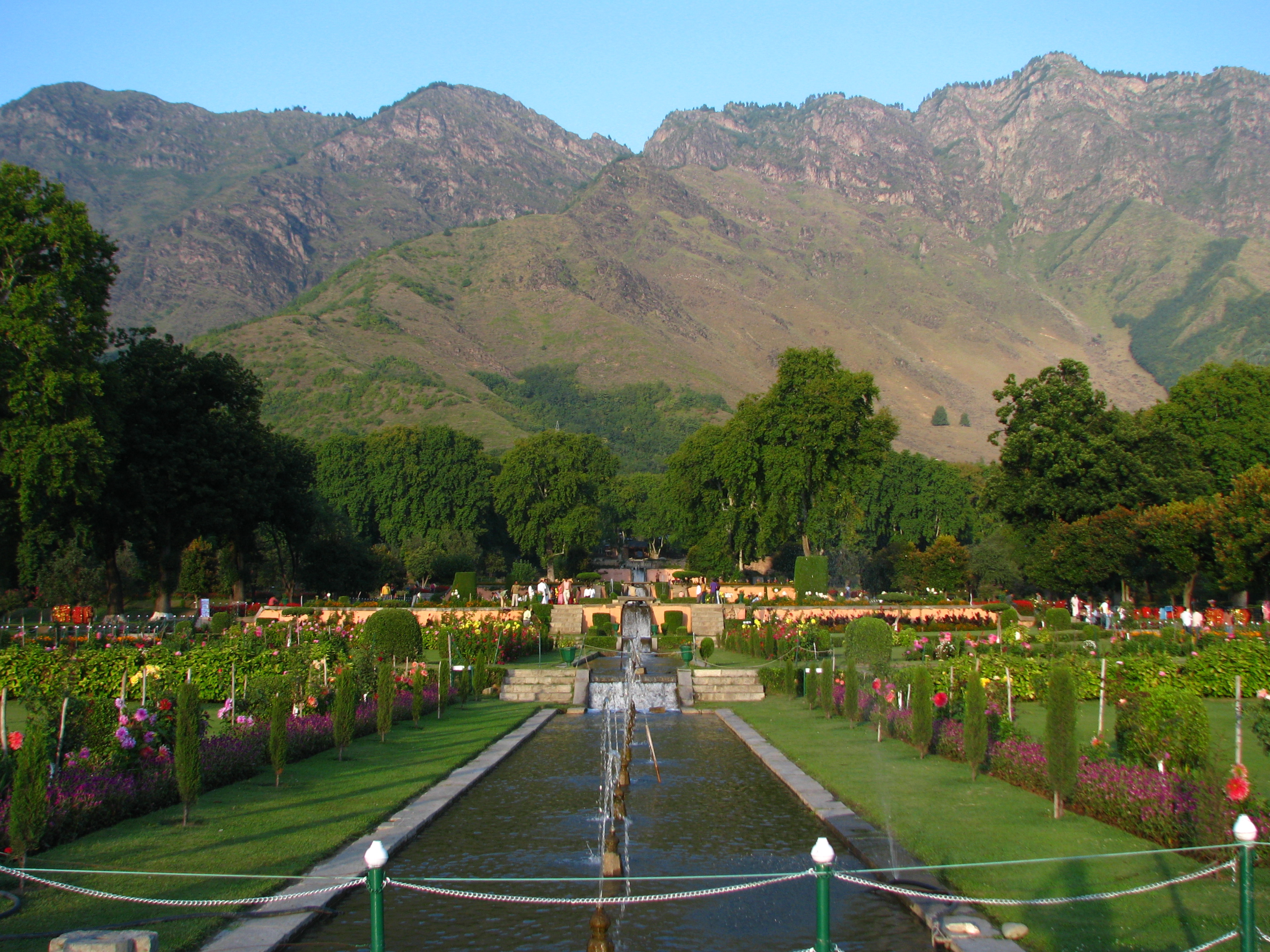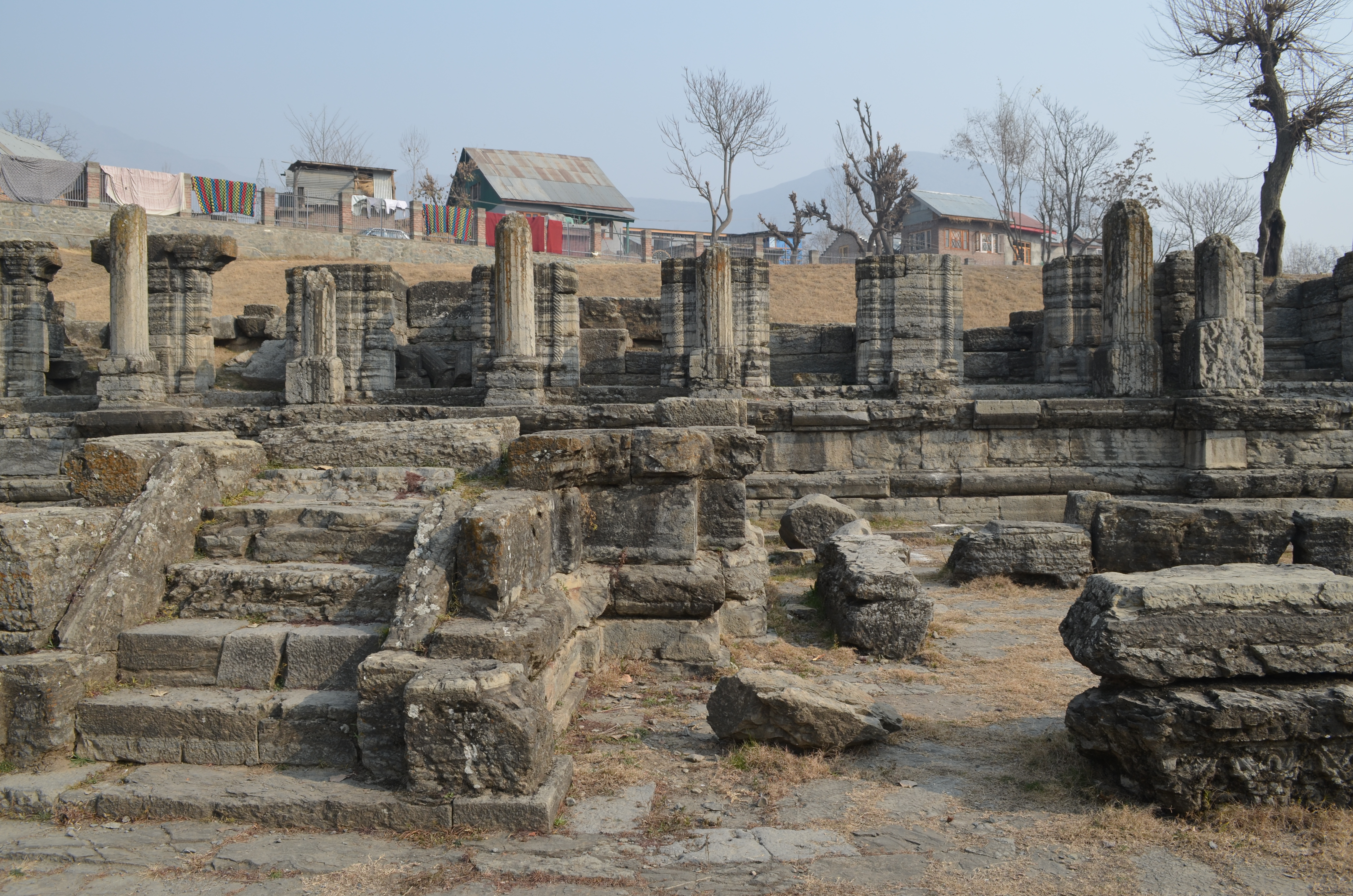|
Pandrethan
The Pandrethan Shiva temple is a Hindu temple dedicated to Shiva at Pandrethan, in the city of Srinagar in Jammu and Kashmir (union territory), Jammu and Kashmir, India. The current structure of the temple dates to , and stands at the centre of a Irrigation tank, tank fed by a natural spring close to the Jhelum river. The temple, though smaller than others, is one of the best preserved of ancient Kashmiri Hindu stone temples. History Pandrethan Pandrethan has been identified as the original site of the capital city of Srinagar, founded by Ashoka (Gonandiya), Ashoka. During the 6th century CE, the capital was shifted a few kilometres northwest, resulting in the area being called ''puranadhisthana'', meaning 'old capital' in Sanskrit, with Srinagar being used as a name for the new capital. The present name, Pandrethan, is a corruption of the Sankrit name. By the 19th century, the area was littered with ancient ruins. Excavations at Pandrethan on the site of ruins of two Buddhist stup ... [...More Info...] [...Related Items...] OR: [Wikipedia] [Google] [Baidu] |
Badami Bagh
Badami Bagh or Badam Bagah is a cantonment town on the outskirts of Srinagar in Jammu and Kashmir, India. Established in the 1920s as military barracks on a site containing several ancient Hindu and Budhhist ruins near Pandrethan, the Badami Bagh Cantonment currently serves as the headquarters of the Indian Army's Chinar Corps, with many of the army's soldiers residing here. The cantonment is established on the two road sides of Jammu–Srinagar National Highway, on the banks of the Jhelum river. A architecturally significant Shiva Temple is located inside the cantonment. History The site of the present Badami Bagh military cantonment had formed part of the ancient city of Pandrethan, identified as the original site of the capital city of Srinagar. When the capital was shifted during the 6th century CE, the area came to be called ''puranadhisthana'', meaning 'old capital' in Sanskrit, which corrupted to 'Pandrethan' over time. By the 19th century, the site had numerous anci ... [...More Info...] [...Related Items...] OR: [Wikipedia] [Google] [Baidu] |
Srinagar
Srinagar (; ) is a city in Indian-administered Jammu and Kashmir in the disputed Kashmir region.The application of the term "administered" to the various regions of Kashmir and a mention of the Kashmir dispute is supported by the tertiary sources (a) through (d), reflecting due weight in the coverage. Although "controlled" and "held" are also applied neutrally to the names of the disputants or to the regions administered by them, as evidenced in sources (f) through (h) below, "held" is also considered politicised usage, as is the term "occupied," (see (i) below). (a) (subscription required) Quote: "Kashmir, region of the northwestern Indian subcontinent ... has been the subject of dispute between India and Pakistan since the partition of the Indian subcontinent in 1947. The northern and western portions are administered by Pakistan and comprise three areas: Azad Kashmir, Gilgit, and Baltistan, the last two being part of a territory called the Northern Areas. Administered ... [...More Info...] [...Related Items...] OR: [Wikipedia] [Google] [Baidu] |
Shri Pratap Singh Museum
The Shri Pratap Singh Museum, commonly known as the SPS Museum, is a museum in Srinagar, Jammu and Kashmir, India. Established in 1898, the museum houses a collection of over 80,000 objects from various regions in Northern India. Description History In 1889, a proposal for the foundation of an archaeology museum in the Indian city of Srinagar was formulated by Amar Singh and S.H. Godmerry. Singh was an officer in the British Indian Army, while Godmerry was a scholar. The pair produced and submitted a memorandum to Pratap Singh of Jammu and Kashmir, the ruler of Sringar and Amar's older brother. The Majarah accepted the proposal and agreed to allow for the establishment of a museum; this new institution would house artifacts from Jammu, Kashmir, Baltistan and Gilgit. The museum was to be located inside a state-owned building near the Jhelum river. The establishment of the museum was overseen by John Marshal, a British archaeologist (and future director of the Archaeologica ... [...More Info...] [...Related Items...] OR: [Wikipedia] [Google] [Baidu] |
Utpala Dynasty
The Utpala Dynasty was a medieval Kashmiri Hindu dynasty that ruled over Kashmir from the 9th to 10th centuries. Founded by Avantivarman in 855 CE, it replaced the Karkota dynasty. It came into existence in the northern region of the Indian subcontinent. The cities of Avantipur (Awantipora) and Suyapur (Sopore) were founded during the reign, and many Hindu temples dedicated to both Vishnu and Shiva, and Buddhist monasteries were built, notable of which is the Avantiswara and Avantiswami temples. Sources Literature Kalhana's ''Rajatarangini'', written in the 11th century, was meant to outline Kashmir's past. The book focused on the Utpala dynasty in its fifth section. The dynasty controlled the area from the 9th to 10th centuries, coming into existence in the northern part of the Indian subcontinent under Avantivarman in 855 CE. He depended on a variety of material including earlier historical works, dynastic genealogies, inscriptions, coins and Puranas. The work has ... [...More Info...] [...Related Items...] OR: [Wikipedia] [Google] [Baidu] |
Ruins Of A 10th Century Hindu Temple At Pandrethan Near Srinagar Kashmir, 1868 Photo
Ruins () are the remains of a civilization's architecture. The term refers to formerly intact structures that have fallen into a state of partial or total disrepair over time due to a variety of factors, such as lack of maintenance, deliberate destruction by humans, or uncontrollable destruction by natural phenomena. The most common root causes that yield ruins in their wake are natural disasters, armed conflict, and population decline, with many structures becoming progressively derelict over time due to long-term weathering and scavenging. There are famous ruins all over the world, with notable sites originating from ancient China, the Indus Valley, ancient Iran, ancient Israel and Judea, ancient Iraq, ancient Greece, ancient Egypt, ancient Yemen, Roman, ancient India sites throughout the Mediterranean Basin, and Incan and Mayan sites in the Americas. Ruins are of great importance to historians, archaeologists and anthropologists, whether they were once individual fortifi ... [...More Info...] [...Related Items...] OR: [Wikipedia] [Google] [Baidu] |
Lalitaditya Muktapida
Lalitaditya alias Muktapida (IAST: Lalitāditya Muktāpīḍa; r. c. 724 CE–760 CE) was a Karkota monarch of the Kashmir region in the Indian subcontinent. The 12th-century Kashmiri chronicler Kalhana characterizes Lalitaditya as a " world conqueror", crediting him with miraculous powers and extensive conquests across India and Central Asia. While Kalhana's account is not supported by contemporary records and largely rejected as exaggerations, he is accepted as the most powerful king of his dynasty. The chronicles of the neighbouring Tang dynasty present him as a vassal-ally, and his involvement in the Tang campaigns may have contributed to his reputation as a great conqueror in Kashmir. Lalitaditya commissioned a number of shrines in Kashmir, including the now-destroyed Martand Sun Temple. He also established several towns, including a new capital at Parihasapura. Background The main source of information about Lalitaditya is '' Rajatarangini'', a chronicle of the rule ... [...More Info...] [...Related Items...] OR: [Wikipedia] [Google] [Baidu] |
Karkota Dynasty
The Karkota dynasty (c. 625 − 855 CE) ruled over the Kashmir valley and some northern parts of the Indian subcontinent during 7th and 8th centuries. Their rule saw a period of political expansion, economic prosperity and emergence of Kashmir as a centre of culture and scholarship. The Karkota rulers constructed several shrines to Vishnu in their dominions. They however also allowed Buddhism to flourish under them. Stupa, Chaitya and Vihara can be found in the ruins of their capital. Martand Sun Temple in the Anantnag district was built by Lalitaditya. It is the oldest known Sun temple in India and was also one of the biggest temple complexes at the time. Avanti Varman ascended the throne of Kashmir in 855, establishing the Utpala dynasty and ending the rule of Karkota dynasty. Sources Literature The Nilamata Purana, believed to have been commissioned by Durlabhavardhana, the first ruler of the dynasty, provides information on contemporary affairs. However, not onl ... [...More Info...] [...Related Items...] OR: [Wikipedia] [Google] [Baidu] |
Debala Mitra
Debala Mitra (14 December 1925 – 2 December 2003) was an Indian archaeologist who served as Director General of the Archaeological Survey of India (ASI) from 1981 to 1983. She is the first woman archaeologist to head the ASI. She explored and excavated several Buddhist sites. The historic site of Ratnagiri in Odisha's Jajpur district, first discovered in 1905, gained prominence following extensive excavations between 1958 and 1961 led by Mitra, which unveiled a remarkable Buddhist complex dating from the 5th-13th century AD. Early life Born on 14 December 1925 at Khulna in Bengal Province (now Bangladesh), Mitra had her early education in Khulna and Calcutta before obtaining her doctorate in Paris Paris () is the Capital city, capital and List of communes in France with over 20,000 inhabitants, largest city of France. With an estimated population of 2,048,472 residents in January 2025 in an area of more than , Paris is the List of ci .... In the ASI Mitra ... [...More Info...] [...Related Items...] OR: [Wikipedia] [Google] [Baidu] |
Ram Chandra Kak
Ram Chandra Kak (5 June 1893 – 10 February 1983) was the prime minister of Jammu and Kashmir during 1945–1947. One of the very few Kashmiri Pandits to ever hold that post, Kak had the intractable job of navigating the troubled waters of the transfer of power from British Raj to the independent dominions of India and Pakistan. Kak was also a pioneering archaeologist who excavated the major sites of antiquities in Kashmir Valley and wrote a definitive treatise on them. Early life Ram Chandra Kak was born to a prominent Kashmiri Pandit family in Srinagar. Ram Chandra Kak was the second among seven children (four sons and three daughters) of Keshav Lal Kak (b. 1873) —a money-lender and part time trader— and Bhageshwari Devi. He spent his early life in the Gurguri Mohalla of Srinagar. Kak graduated from Sri Pratap College in 1913 and enrolled for a M. A., before being selected for training in archaeology. From 1914 to 1919, Kak trained under John Marshall. Caree ... [...More Info...] [...Related Items...] OR: [Wikipedia] [Google] [Baidu] |
Vishnu
Vishnu (; , , ), also known as Narayana and Hari, is one of the Hindu deities, principal deities of Hinduism. He is the supreme being within Vaishnavism, one of the major traditions within contemporary Hinduism, and the god of preservation (sattva). Vishnu is known as ''The Preserver'' within the Trimurti, the triple deity of Para Brahman, supreme divinity that includes Brahma and Shiva.Gavin Flood, An Introduction to Hinduism' () (1996), p. 17. In Vaishnavism, Vishnu is the supreme Lord who creates, protects, and transforms the Hindu cosmology, universe. Tridevi is stated to be the energy and creative power (Shakti) of each, with Lakshmi being the equal complementary partner of Vishnu. He is one of the five equivalent deities in Panchayatana puja of the Smarta tradition of Hinduism. According to Vaishnavism, the supreme being is with qualities (Saguna Brahman, Saguna), and has definite form, but is limitless, transcendent and unchanging absolute Brahman, and the primal Atma ... [...More Info...] [...Related Items...] OR: [Wikipedia] [Google] [Baidu] |



